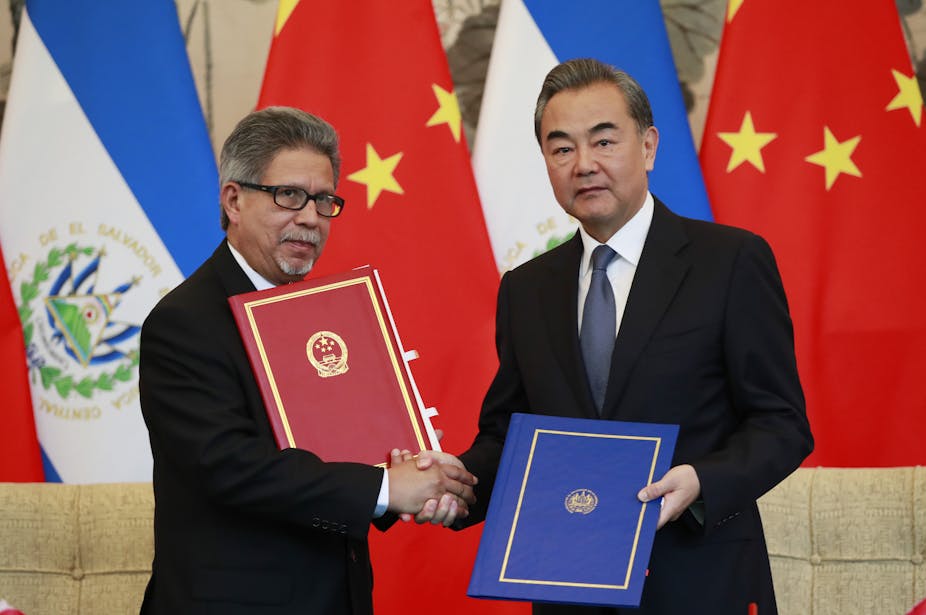The US foreign policy approach to China – from President Donald Trump’s bellicose words and the recent prospect of a trade war, to the administration’s description of China as “a revisionist power” – has been criticised as ineffectual bluster, particularly in the face of growing uncertainty over Washington’s commitment to its allies. But more, it is based on a misunderstanding of Chinese foreign policy which fails to account for the other means by which Beijing may achieve its goals. One example is China’s increased involvement in Latin America, where its influence is growing.
Popular Western conceptions of Chinese foreign policy come in two versions. The first assumes that it showers corrupt regimes with Chinese money with little discernible aims, as in the depiction of Chinese loans to Venezuela. This also views Chinese foreign policy as being a largely mercenary endeavour.
The second is the perception of China as a revisionist power that seeks to challenge US dominance, focusing largely on the build up of China’s military and reflected in President Trump’s call for a “hard power” budget. This assumes that a clash between China and the US is almost inevitable, as popularised by Graham Allison’s bestseller, Destined for War. Despite their differences, both views ignore the other approaches China is using to realise its goals abroad.
Honed from its experience in Africa, Chinese foreign policy emphasises “soft power” assets, in the form of a global charm offensive. China has become a popular study destination for students from Anglophone Africa, for example, countries which also find appeal in the so-called Beijing Consensus, or Chinese model of economic development.
Beijing uses shared experiences to further its ties with the developing world, such as recalling the struggles of national liberation to former colonies. China’s leaders are also quick to exploit the mistakes of the Trump presidency. For example, China stands to gain a greater foothold in Iran’s oil industry as the threat of American sanctions scare away European firms.
In America’s backyard
Panama’s recognition of the People’s Republic of China in 2017 is an indication of Beijing’s growing influence in the region, concerning those worried about the erosion of Washington’s hold over Latin America.
Beijing describes the region as “vibrant and promising”, exploiting US missteps in the region, such as Trump insulting various nations by describing them as “shitholes”. Such outbursts have alienated many, ensuring that former Secretary of State Rex Tillerson’s warning of China’s “imperial ambitions” on the continent will cut little ice among Latin American governments.
China is also able to gain influence in Latin America due to its lack of related historical baggage. Tillerson’s warning is surely perceived as hypocritical by many Latin American states, given the long and contentious history of US interference in its neighbours to the south. China on the other hand has been able to use its experience of economic development to position itself as a potential alternative power and influence in the region.
It is telling that the US is mistakenly focusing on hard power at the expense of soft power: Joseph Nye, the founding father of soft power, warned that the Trump administration has eroded America’s soft power capabilities. Citing a survey from the Pew Research Centre, among respondents from 134 countries, only 30% had a positive attitude toward the US – the same proportion as toward China.
Power of the ‘petroyuan’
Venezuela’s decision to price its oil reserves in Chinese yuan rather than US dollars has been interpreted as desperation on the part of Venezuela’s government. But it also serves to illustrate China’s growing influence – and its potential to challenge the US in a different way to the traditional approach of a revisionist power.

The petroyuan was well received in Russian state media such as Russia Today, echoing Moscow’s willingness to forego the dollar in favour of the yuan, part of the Kremlin’s attempts to diminish the petrodollar and economically isolate the US. Trump’s strategies may have augmented US military power in a bid to counter China and Russia, but misinterpretation of Chinese strategy may see the chipping away of this pillar of US economic hegemony.
Another of China’s gains is El Salvador’s newly forged relations with Beijing, and its concurrent severing of ties with Taiwan. Beijing’s willingness to fund infrastructure projects in El Salvador led to Taipei accusing Beijing of engaging in “dollar diplomacy” in order to isolate it.
While these have long been features of China’s policies towards the developing world, the hostile reaction of the US is unprecedented, having previously been largely indifferent to diplomatic switches from Taiwan to China. This has been to attributed the hawkish John Bolton’s influence on the Trump administration, but it also shows Washington’s fears over China’s involvement in a region seen as the American sphere of influence, as expressed as far back as the Monroe Doctrine in 1823. This is likely to end US indifference towards the developing world, given that this attitude has helped cement China’s post-Cold War objectives.
What do China’s manoeuvres in Latin America add up to? The idea of a clash between the US and China as a growing superpower inevitably focuses on China’s military capabilities, but this ignores the other means at Beijing’s disposal. The legendary Chinese strategist Sun Tzu said that “subduing the enemy without fighting is the acme of skill” – China’s foreign policy strategies seem focused on such a goal.

